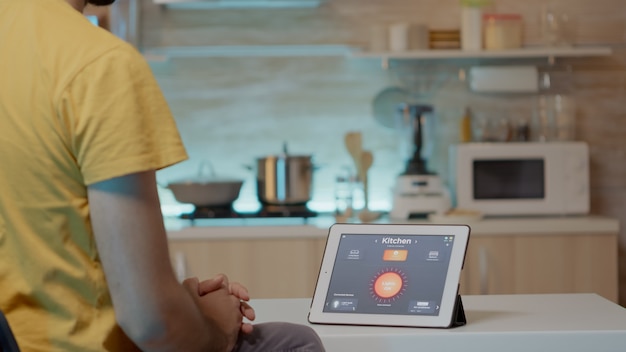In the ever-evolving world of electronics, relay modules have become an essential component for hobbyists, engineers, and tech enthusiasts alike. These devices allow low-power circuits to control higher-powered devices, making them a cornerstone in projects ranging from simple home automation systems to complex industrial applications. Among the various types of relay modules available, four key types stand out: the smart relay, Arduino driving relay, Raspberry Pi relay, and the 8-channel relay module.
Each of these relay modules serves a unique purpose, catering to different project requirements and user needs. For instance, a smart relay can be integrated into home automation systems for remote control, while an Arduino driving relay is tailored for those who work with Arduino microcontrollers. Similarly, a Raspberry Pi relay is optimized for projects involving the Raspberry Pi platform, and the 8-channel relay module is ideal for situations where multiple devices need to be controlled simultaneously.
In this article, we’ll delve into each of these relay types, exploring their functionalities, use cases, and how they interconnect in the broader scope of electronics projects. Whether you’re a beginner looking to understand the basics or an experienced builder seeking to expand your knowledge, this guide will provide you with the insights you need to make informed decisions about relay modules for your next project.
Smart Relay: The Future of Automated Control
A smart relay is a versatile device that has revolutionized the way we think about automation and control systems. Unlike traditional relays that require physical intervention or a direct electrical signal to operate, a smart relay can be controlled remotely through various communication protocols, such as Wi-Fi, Bluetooth, or Zigbee. This capability makes the smart relay an integral component in modern home automation systems, industrial machinery, and even smart city infrastructure.
One of the key features of a smart relay is its ability to be integrated into a broader network of smart devices. For example, in a smart home setup, a smart relay can be programmed to control lights, thermostats, and even security systems, all from a single mobile app or centralized control unit. This level of integration not only simplifies the user experience but also enhances the overall efficiency of the system.
Moreover, smart relays are often equipped with advanced features like scheduling, energy monitoring, and real-time status updates. These features allow users to optimize their energy consumption by automating the operation of devices based on specific times of the day or real-time environmental conditions. For instance, a smart relay can be set to turn off all unnecessary appliances when you leave the house, thereby saving energy and reducing utility costs.

In summary, the smart relay represents a significant advancement in relay technology, offering enhanced functionality, remote control, and integration capabilities. Whether you’re looking to automate your home, manage an industrial process, or build a smart city infrastructure, the smart relay provides the flexibility and control needed to optimize your system’s performance.
Arduino Driving Relay: Seamless Integration for Microcontroller Projects
When it comes to DIY electronics and prototyping, the Arduino platform has become a go-to for enthusiasts and professionals alike. One of the essential components that enhance the functionality of an Arduino project is the Arduino driving relay. This type of relay module allows an Arduino board to control high-voltage devices, such as motors, lights, and home appliances, using the low-power signals generated by the microcontroller.
The Arduino driving relay is specifically designed to interface with the digital output pins of an Arduino board. It typically operates at 5V, which is compatible with most Arduino models, including the popular Arduino Uno and Arduino Nano. By using an Arduino driving relay, users can safely control high-voltage circuits without risking damage to their microcontroller, making it an invaluable tool for projects that require the integration of different voltage levels.
One of the major advantages of using an Arduino driving relay is the ease of setup and programming. The relay module can be easily connected to the Arduino board using simple jumper wires, and controlling the relay is as straightforward as writing a few lines of code in the Arduino IDE. For instance, a basic program can turn a relay on or off based on input from sensors or other triggers, enabling the automation of tasks like turning on a fan when the temperature rises or activating a pump when moisture levels drop.
Additionally, the Arduino driving relay is highly versatile and can be used in a wide range of applications. From building home automation systems to creating interactive art installations, this relay module opens up a world of possibilities for those working with Arduino. Its ability to handle high-power devices with precision and reliability makes it an essential component in any Arduino-based project.
In conclusion, the Arduino driving relay is a powerful tool that bridges the gap between low-power microcontrollers and high-voltage devices. Its seamless integration with Arduino boards and straightforward programming make it an ideal choice for both beginners and experienced makers looking to expand the capabilities of their projects.
Raspberry Pi Relay: Expanding the Capabilities of Your Raspberry Pi
The Raspberry Pi, known for its versatility and power, is a favorite among hobbyists and developers for a wide range of projects, from simple DIY gadgets to complex IoT systems. To maximize the potential of a Raspberry Pi, one essential component is the Raspberry Pi relay, which enables the control of high-voltage devices using the Raspberry Pi’s GPIO (General Purpose Input/Output) pins.

A Raspberry Pi relay is specifically designed to work with the Raspberry Pi’s 3.3V GPIO output, making it a perfect match for this compact yet powerful computer. With a Raspberry Pi relay, you can control devices like lights, fans, and even industrial equipment, all from the comfort of your Raspberry Pi. This opens up a myriad of possibilities, particularly in home automation, robotics, and IoT applications.
One of the key advantages of using a Raspberry Pi relay is the ability to control multiple devices simultaneously. With the GPIO pins on the Raspberry Pi, users can connect and manage several relays at once, allowing for complex automation scenarios. For example, in a smart home setup, a Raspberry Pi relay can be used to control lighting, heating, and security systems, all from a single Raspberry Pi unit. This level of integration not only simplifies the management of multiple devices but also enhances the overall efficiency of the system.
Another significant benefit of the Raspberry Pi relay is its ease of use. Setting up a relay with a Raspberry Pi involves simple wiring and basic Python programming, making it accessible even to beginners. Numerous libraries and tutorials are available online, providing step-by-step guidance on how to integrate a Raspberry Pi relay into various projects. This support network ensures that even those new to the Raspberry Pi platform can quickly learn to use relays effectively.
In summary, the Raspberry Pi relay is a crucial addition to any Raspberry Pi-based project, enabling the control of high-voltage devices with ease and precision. Whether you’re automating your home, building a robot, or developing an IoT application, a Raspberry Pi relay will significantly enhance the functionality and versatility of your project.
8-Channel Relay Module: Multiplying Control in Complex Projects
The 8-channel relay module is an essential tool for projects that require the simultaneous control of multiple high-voltage devices. Unlike single or dual relay modules, an 8-channel relay module offers the ability to manage up to eight devices independently, all from a single microcontroller or single-board computer, such as an Arduino or Raspberry Pi. This level of control is particularly useful in complex automation systems, industrial applications, and large-scale home automation setups.
One of the primary benefits of an 8-channel relay module is its ability to streamline project wiring and reduce the complexity of managing multiple relays. Instead of using multiple single-relay modules, which would require extensive wiring and multiple control signals, an 8-channel relay module consolidates everything into one compact unit. This not only saves space but also simplifies the control logic, as all eight relays can be managed through a single interface, with each relay channel operating independently.
The 8-channel relay module typically supports both 5V and 3.3V control signals, making it compatible with a wide range of microcontrollers and single-board computers. Whether you’re working with an Arduino, Raspberry Pi, or even more advanced platforms like the ESP8266 or ESP32, the 8-channel relay module can easily integrate into your system. This flexibility makes it an ideal choice for projects where multiple devices need to be controlled, such as automated greenhouse systems, smart home installations, or multi-zone security systems.

Moreover, each relay on the 8-channel module is rated to handle significant loads, often up to 10A at 250V AC or 30V DC, which is sufficient for most home and industrial applications. This means that with an 8-channel relay module, you can control anything from lights and fans to motors and pumps, all while ensuring safe and reliable operation. Additionally, many 8-channel relay modules come with built-in protection features, such as optocouplers, which isolate the control circuitry from the high-voltage components, further enhancing safety and stability.
In conclusion, the 8-channel relay module is a powerful and versatile solution for projects that demand the control of multiple devices. Its ability to simplify wiring, support various platforms, and handle substantial electrical loads makes it an invaluable component in both simple and complex electronic systems. Whether you’re automating a large-scale environment or managing multiple devices in a home automation project, the 8-channel relay module offers the control and flexibility needed to bring your project to life.
Conclusion
Relay modules are indispensable components in a wide range of electronic projects, offering the ability to control high-voltage devices with low-power signals from microcontrollers and single-board computers. Whether you’re automating a home, building an industrial system, or developing an IoT application, understanding the different types of relay modules is crucial.
The smart relay stands out for its ability to integrate into modern automation systems, offering remote control and advanced features that enhance energy efficiency and user convenience. The Arduino driving relay is perfect for those working with Arduino boards, providing seamless integration and straightforward programming for controlling high-voltage devices. Similarly, the Raspberry Pi relay expands the capabilities of the Raspberry Pi, allowing it to manage multiple devices in complex automation scenarios. Finally, the 8-channel relay module offers unparalleled flexibility and control in projects that require the simultaneous management of multiple devices, making it an essential tool for more complex systems.
By choosing the right relay module for your specific needs—whether it’s a smart relay, Arduino driving relay, Raspberry Pi relay, or an 8-channel relay module—you can ensure that your project operates efficiently, safely, and effectively. With the insights provided in this guide, you’re now equipped to make informed decisions and take your electronic projects to the next level.
